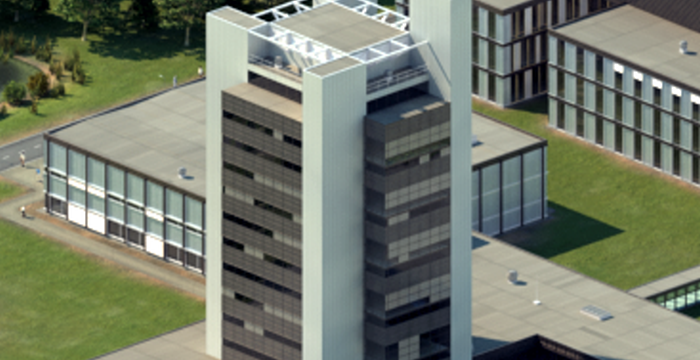I started my bachelor of Molecular Life Sciences in 2016 at Wageningen University. I graduated my bachelor's with a minor in bio-nanotechnology in 2020. I continued with a master's in Molecular life sciences, which I finished in 2023. During my master's I specialized in physical chemistry.
My thesis was on building a model for ecosystem dynamics wherein we included a simple implementation of species evolution, and investigated what effects evolution had on the dynamics. Additionally, I did an internship at the Department of Solid Mechanics at Lund University. Here, I worked on impacts in granular fluid beds using X-ray tomography and ultra-fast X-ray radiography.
Now, I work in the Photocatalytic Synthesis Group, on unraveling light-induced electronic and photothermal processes by in-situ ultrafast spectroscopy in silver nanocatalysts, under the supervision of Dr. Annemarie Huijsser and Prof. Guido Mul. This project nicely combines my interests in physics, chemistry and complex phenomena.
Expertise
Material Science
- Amphiphile
- Droplet
- Liquid Crystal
- Biosensor
- Surface
Mathematics
- Predator-Prey System
- Clustering
- Predator-Prey
Organisations
I work on unravelling the light-induced electronic and photothermal processes in plasmonic nanoparticles, which have potential to be used as photocatalysts for the reduction of CO2. I do this using in-situ ultrafast spectroscopy, f.e. using transient absorption and timeresolved photoluminescence.
We use silver nanoparticles to harvest light through a phenomenon called localized surface plasmon resonance (LSPR). Basically, upon absorption of light of the right wavelength, the free electrons in the nanoparticle will resonate collectively. The LSPR decays quickly and forms either hot electrons or generate a short burst of intense heat in the nanoparticle. Hot electrons have high kinetic energy and can transfer to the adsorbed CO2, reducing the CO2. On the other hand, a short burst of heat can also reduce CO2. What mechanism is at play we do not know yet but aim to uncover.
Within the project, I will use in-situ femtosecond transient absorption spectroscopy (TA) and photoluminescence spectroscopy (PL) to chart the electron dynamics and discover the catalytic pathway.
Finally, the project is in collaboration with the group of Andrea Baldi at the Vrije Universiteit in Amsterdam (VU). Here, they will focus on the optimal design and fabrication of the photocatalyst. Additionally, they will work on identifying the chemical intermediates through surface-enhanced Raman Scattering spectroscopy (SERS).
In short, through ultra-fast and in-situ spectroscopies, we aim to develop a photocatalyst based on silver nanoparticles to efficiently and selectively reduce CO2.
Publications
Research profiles
Address

University of Twente
Horst Complex (building no. 20), room ME150
De Horst 2
7522 LW Enschede
Netherlands
University of Twente
Horst Complex ME150
P.O. Box 217
7500 AE Enschede
Netherlands